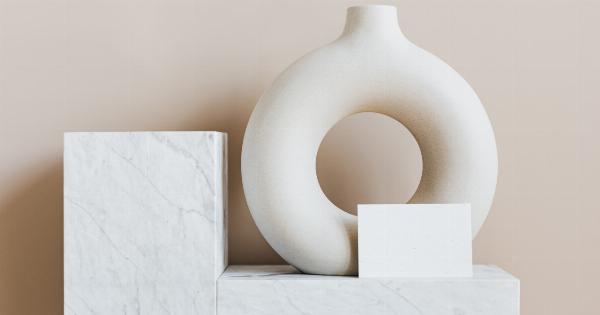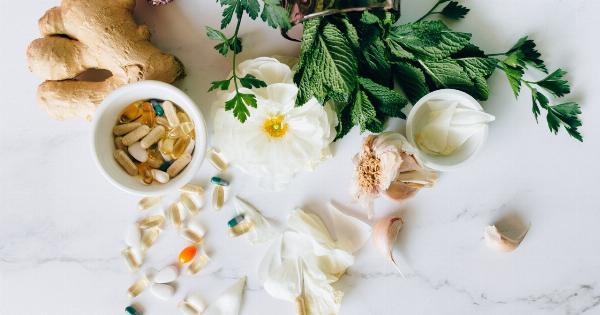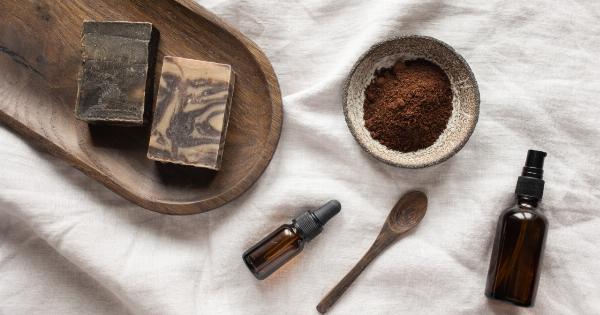Life can sometimes be overwhelming, leaving us feeling stressed, anxious, or unable to relax. As we navigate through the daily hustle and bustle, it is important to find moments of calm and solace to rejuvenate our mind and body.
While there are various ways to achieve tranquility, one effective approach is through the use of natural remedies. In this article, we will explore a selection of calming blends that can help restore balance and peace in your life.
Aromatherapy: Harnessing the Power of Scent
Aromatherapy is an ancient practice that utilizes essential oils to promote wellness and relaxation. These oils, extracted from various plants, possess unique properties that can positively impact our well-being.
When it comes to calming the mind and body, certain essential oils have proven to be particularly effective.
Lavender and Chamomile: A Dreamy Duo
Lavender and chamomile are two popular essential oils known for their calming properties. Lavender, with its sweet floral scent, has long been used to reduce anxiety and induce sleep. Its soothing aroma helps alleviate stress and promotes deep relaxation.
Chamomile, on the other hand, possesses gentle sedative effects and is often used to ease tension and soothe the nervous system.
How to Use:
Combine a few drops of lavender and chamomile essential oils with a carrier oil, such as sweet almond or jojoba oil. Massage this blend onto your wrists, temples, or the soles of your feet before bedtime for a truly tranquil experience.
You can also add a few drops to a warm bath or use them in a diffuser to fill your space with their calming aroma.
Frankincense: The King of Calmness
Derived from the resin of the Boswellia tree, frankincense has been cherished for centuries due to its spiritual and relaxation benefits. Its woody, earthy aroma is grounding and helps soothe an anxious mind.
Applying frankincense oil during meditation or mindfulness practices can promote a deep sense of calmness and mental clarity.
How to Use:
Place a few drops of frankincense essential oil on your palms, rub them together to warm the oil, and then inhale deeply. Alternatively, mix frankincense with a carrier oil and use it for a soothing self-massage on your neck, shoulders, and chest.
Bergamot: Citrus Bliss
Bergamot, a fragrant citrus fruit, is known for its uplifting and stress-relieving properties. It helps alleviate anxiety, depression, and mental fatigue, allowing you to experience a greater sense of well-being.
Its delightful aroma can boost your mood and promote relaxation.
How to Use:
Add a few drops of bergamot essential oil to an unscented lotion and apply it to your body after a warm shower or bath. You can also diffuse bergamot oil in your living space to create a serene atmosphere.
Holy Basil: Nature’s Elixir
Considered a sacred herb in some cultures, holy basil, also known as tulsi, has been revered for its powerful calming effects. Known for its adaptogenic properties, this herb helps the body adapt to stress and promotes overall balance and well-being.
Holy basil can be particularly beneficial for those experiencing prolonged mental or physical stress.
How to Use:
Enjoy holy basil’s calming benefits by sipping on a cup of tulsi tea. Steep dried holy basil leaves in hot water for 5-10 minutes, then savor the warm, soothing brew.
Ayurvedic Blend: The Mind-Body Connection
Ayurveda, an ancient Indian traditional healing system, takes a holistic approach to achieving balance and peace in our lives. By understanding our unique mind-body constitution, we can tailor our practices and remedies to suit our individual needs.
Ayurvedic blends often incorporate herbs and spices that calm the mind and restore harmony.
Ashwagandha and Brahmi: A Nurturing Combination
Ashwagandha and brahmi are two powerful Ayurvedic herbs known for their ability to reduce stress and promote mental well-being. Ashwagandha is an adaptogen that helps the body adapt to stress while also providing a sense of calm and rejuvenation.
Brahmi, on the other hand, supports cognitive function and helps improve memory and concentration.
How to Use:
Create an Ayurvedic blend by mixing equal parts of ashwagandha and brahmi powders. Stir the blend into warm almond or coconut milk and sweeten it with a touch of honey for a comforting and nourishing beverage.
Enjoy this soothing elixir in the evening to calm your mind before bedtime.
Passionflower: Tranquilizer Herb
Passionflower, a graceful vine adorned with beautiful lavender-colored flowers, has long been used as a natural sedative to ease anxiety and promote relaxation.
This herb is particularly helpful for those struggling with insomnia or an overactive mind that prevents restful sleep.
How to Use:
Brew a cup of passionflower tea by steeping dried passionflower leaves in hot water for 10-15 minutes. Sip on this soothing herbal infusion 30 minutes before bed to prepare your mind and body for a restful night’s sleep.
Valerian Root: Sleep Savior
Valerian root, native to Europe and Asia, is widely recognized for its sleep-inducing effects. This herb has been used for centuries as a natural remedy for insomnia and anxiety disorders.
Valerian root helps calm the nervous system, promoting better sleep and reducing anxiety symptoms.
How to Use:
Take valerian root as a supplement or drink valerian tea before bedtime to ease into a deep and rejuvenating sleep. Do consult with a healthcare professional before using valerian, as it may interact with certain medications.
Meditation and Mindfulness: The Power of Stillness
While natural remedies like essential oils and herbal blends can work wonders in calming the mind and body, it is equally important to cultivate practices that promote inner peace and stillness.
Meditation and mindfulness techniques offer an opportunity to quiet the mind, reduce stress, and enhance overall well-being.
The Practice of Meditation
Meditation has been practiced for thousands of years as a means to quiet the mind and achieve a state of deep relaxation and mental clarity. By focusing the attention and eliminating the stream of thoughts, the mind becomes calmer and more centered.
Regular meditation practice can help reduce anxiety, stress, and promote emotional balance.
Mindfulness in Everyday Life
Mindfulness involves being fully present in the moment and cultivating a non-judgmental awareness of our thoughts, feelings, and sensations.
By bringing our attention to the present moment, we can reduce stress and anxiety caused by worrying about the future or dwelling on the past. Mindfulness can be practiced during daily activities such as eating, walking, or even doing household chores.
The Art of Breathwork
Deep, conscious breathing is a powerful tool to calm the mind and relax the body. By focusing on the breath, we activate the body’s natural relaxation response and reduce stress.
Breathwork techniques, such as diaphragmatic breathing or alternate nostril breathing, can help restore balance and induce a sense of calmness.
Creating a Calming Environment
In addition to incorporating natural remedies and mindfulness practices into your daily routine, creating a calm and soothing environment can greatly enhance your overall well-being.
Consider the following tips to transform your surroundings into a tranquil oasis:.
Natural Lighting
Maximize natural light in your space by opening curtains or blinds during the day. Sunlight has a positive impact on mental health and can boost your mood and productivity.
If natural light is limited, introduce soft, warm lighting with the use of lamps or candles.
Clutter-Free Space
Declutter your surroundings to create an atmosphere of calmness and serenity. A clutter-free space promotes mental clarity and reduces distractions, allowing you to fully relax and unwind.
Soothing Colors
Choose soothing colors for your walls, linens, and furnishings. Soft pastel shades, earthy tones, or cool blues and greens can help create a peaceful ambiance, facilitating relaxation and tranquility.
Nature-Inspired Elements
Bring a touch of nature indoors with houseplants, flowers, or natural materials such as wood or stone. These elements not only add beauty to your space but also evoke a sense of calmness and connection with the natural world.
Soft Textures
Introduce soft and cozy textures with plush rugs, comfortable cushions, or throw blankets. These tactile elements invite relaxation and provide a comforting feeling of security and warmth.






























